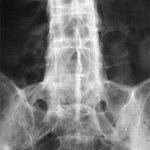The use of long-term antibiotics to treat ReA remains controversial. A randomized trial suggests that a six-month course of antibiotic therapy may be effective for Chamydial ReA, but this has not been observed for other causative organisms.16 A recent meta-analysis of antibiotic treatment for ReA failed to show any benefit, although the included trials were very heterogeneous.17 Prevention of ReA may be possible by the prompt recognition and treatment of Chamydial infections, but this has not been shown for other causes of ReA.21
The recognition of the autoinflammatory nature of this disease and the role of the innate immune system in its pathogenesis may help guide future treatment.
Dr. Hausmann is a pediatric and adult rheumatology fellow at Boston Children’s Hospital and Beth Israel Medical Center.
References
- Kingsley G, Sieper J. Third International Workshop on Reactive Arthritis. 23–26 September 1995, Berlin, Germany. Report and abstracts. Ann Rheum Dis. 1996;55:564-584.
- Morris D, Inman RD. Reactive arthritis: Developments and challenges in diagnosis and treatment. Curr Rheumatol Rep. 2012;14:390-394.
- Bernini L, Manzini CU, Giuggioli D, Sebastiani M, Ferri C. Reactive arthritis induced by intravesical BCG therapy for bladder cancer: Our clinical experience and systematic review of the literature. Autoimmun Rev. 2013;12:1150-1159.
- Carter JD, Hudson AP. Reactive arthritis: Clinical aspects and medical management. Rheum Dis Clin North Am. 2009;35:21-44.
- Townes JM. Reactive arthritis after enteric infections in the United States: The problem of definition. Clin Infect Dis. 2010;50:247-254.
- Ambarus C, Yeremenko N, Tak PP, Baeten D. Pathogenesis of spondyloarthritis: Autoimmune or autoinflammatory? Curr Opin Rheumatol, 2012;24:351-358.
- Rich E, Hook EW, Alarcón GS, Moreland LW. Reactive arthritis in patients attending an urban sexually transmitted diseases clinic. Arthritis Rheum. 1996;39:1172-1177.
- Carter JD, Inman RD. Chlamydia-induced reactive arthritis: Hidden in plain sight? Best Pract Res Clin Rheumatol. 2011;25:359-374.
- Vasala M, Hallanvuo S, Ruuska P, Suokas R, Siitonen A, Hakala M. High frequency of reactive arthritis in adults after Yersinia pseudotuberculosis O:1 outbreak caused by contaminated grated carrots. Ann Rheum Dis. 2013; Jul 12. [Epub ahead of print]
- Martin DJ, White BK, Rossman MG. Reactive arthritis after Shigella gastroenteritis in American military in Afghanistan. J Clin Rheumatol. 2012;18:257-258.
- Arnedo-Pena A, Beltrán-Fabregat J, Vila-Pastor B, et al. Reactive arthritis and other musculoskeletal sequelae following an outbreak of Salmonella hadar in Castellon, Spain. J Rheumatol. 2010;37:1735-1742.
- Hannu T, Kauppi M, Tuomala M, Laaksonen I, Klemets P, Kuusi M. Reactive arthritis following an outbreak of Campylobacter jejuni infection. J Rheumatol. 2004;31:528-530.
- Alvarez-Navarro C, Cragnolini JJ, Santos Dos HG, et al. Novel HLA-B27-restricted epitopes from Chlamydia trachomatis generated upon endogenous processing of bacterial proteins suggest a role of molecular mimicry in reactive arthritis. J Biol Chem. 2013; 288:25810-25825.
- Meyer A, Chatelus E, Wendling D, et al. Safety and efficacy of anti-tumor necrosis factor α therapy in ten patients with recent-onset refractory reactive arthritis. Arthritis Rheum. 2011;63:1274-1280.
- Tanaka T, Kuwahara Y, Shima Y, et al. Successful treatment of reactive arthritis with a humanized anti-interleukin-6 receptor antibody, tocilizumab. Arthritis Rheum. 2009;61:1762-1764.
- Carter JD, Espinoza LR, Inman RD, et al. Combination antibiotics as a treatment for chronic Chlamydia-induced reactive arthritis: A double-blind, placebo-controlled, prospective trial. Arthritis Rheum. 2010;62:1298-1307.
- Barber CE, Kim J, Inman RD, Esdaile JM, James MT. Antibiotics for treatment of reactive arthritis: A systematic review and metaanalysis. J Rheumatol. 2013;40:916-928.
- Kvien TK, Gaston JSH, Bardin T, et al. Three month treatment of reactive arthritis with azithromycin: A EULAR double blind, placebo controlled study. Ann Rheum Dis. 2004;63:1113-1119.
- Laasila K, Laasonen L, Leirisalo-Repo M. Antibiotic treatment and long-term prognosis of reactive arthritis. Ann Rheum Dis. 2003;62:655-658.
- Leirisalo-Repo M, Helenius P, Hannu T, et al. Long term prognosis of reactive salmonella arthritis. Ann Rheum Dis. 1997;56:516-520.
- Bardin T, Enel C, Cornelis F, et al. Antibiotic treatment of venereal disease and Reiter’s syndrome in a Greenland population. Arthritis Rheum. 1992;35:190-194.


